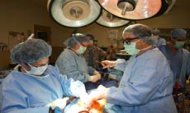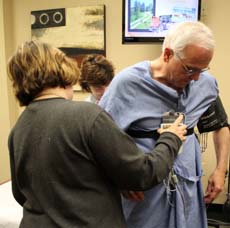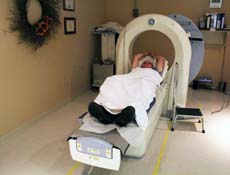A Never Ending Journey
Written by Tony Mussari, Sr.
Edited by Kitch Loftus-Mussari
Photographs by Kitch Loftus-Mussari
Copyright Mussari-Loftus Associates, LTD 2013
All Rights Reserved
The farther backward you look, the farther forward you can see. Winston Churchill.
Two things happened this week that caught my attention. One was a letter I received from a student at Misericordia University about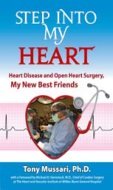 our book, Step Into My Heart. The other was a three hour visit to N.E.P.A. Cardiology Associates for a Nuclear Exercise Stress Test. The former was a very pleasant experience, the latter brought back memories I try to forget.
our book, Step Into My Heart. The other was a three hour visit to N.E.P.A. Cardiology Associates for a Nuclear Exercise Stress Test. The former was a very pleasant experience, the latter brought back memories I try to forget.
For those who may not know, heart disease is the number one cause of death for both men and women in the United States.
Every year, about 715,000 Americans have a heart attack.
Coronary Artery Bypass Grafting is the most common type of open-heart surgery in the United States, with more than 500,000 surgeries performed each year
About 600,000 people die from heart disease in the United States each year—that’s 1 out of every 4 deaths.
Cardiovascular disease, including heart disease and stroke, costs the United States $312.6 billion each year.
Approximately every 34 seconds, 1 American has a coronary event and approximately every 1 minute, an American will die of one.
Kaylin’s Note
Kaylin Miley is a student at Misericordia University. For one of her class assignments, she read Step Into My Heart.
This is the letter she wrote after she finished reading the book.
Dear Dr. Mussari,
I have just finished reading your book Step Into My Heart. I chose the book for a paper I was assigned for my Impairments and Disabilities class here at Misericordia University.
I cannot express how amazing this book is. The book,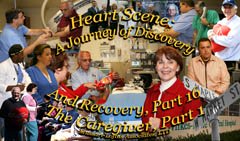 although there is no mention of occupational therapy, gave me much insight into how important being a competent and caring therapist is to the recovery and advancement of a patient. The words you wrote have touched me deeply and I can say for sure that I will strive to be as good as the caregivers you had, both medical and nonmedical, after your surgery. The book will forever be a part of me.
although there is no mention of occupational therapy, gave me much insight into how important being a competent and caring therapist is to the recovery and advancement of a patient. The words you wrote have touched me deeply and I can say for sure that I will strive to be as good as the caregivers you had, both medical and nonmedical, after your surgery. The book will forever be a part of me.
Also, the book gave me insight into what my dad went through this summer. Although he did not have a heart attack 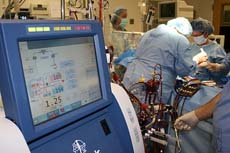 (the doctors caught the blockages before it came to that) he did have triple bypass surgery. I was like the people you mentioned in your book who said it was a common procedure and that my dad had nothing to worry about.
(the doctors caught the blockages before it came to that) he did have triple bypass surgery. I was like the people you mentioned in your book who said it was a common procedure and that my dad had nothing to worry about.
After reading the book, I realize there is much more to what went on than I realized. I am so much more grateful to the team of professionals that have helped and are still helping my dad. Thank you so much for the inspiring story and the new knowledge of what goes into being a well-rounded and successful caregiver. I will strive to meet these standards throughout my school and professional careers.
Thank you so much!
Kaylin Miley, OTS
Kaylin’s beautiful, encouraging and thoughtful note could not have come at a more opportune time. We have been struggling with three health issues, and Kaylin’s caring words helped us to put some things in perspective.
I’m a man with heart disease.
Yes, I had life-saving open heart surgery in 2007, and I’m fortunate to be alive.
This is a summary of the things I learned about heart disease and open heart surgery before and after my operation:
1. It’s a life-altering experience;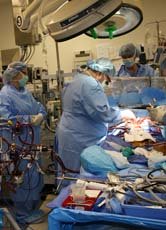
2. It’s a challenging experience;
3. It’s a widely misunderstood experience;
4. It’s a soul-searching/spiritual experience;
5. It’s a family experience;
6. It’s a highly personal experience;
7. It’s a humbling experience;
8. It’s a liberating experience;
9. It’s an opportunity for growth;
10. It’s a journey that is never ending.
A Harsh Reality
That being said, a report published by the U.S. Library of Medicine serves as a chilling reminder to those of us who have the scars of open heart surgery “…this surgery does NOT prevent the coronary artery blockage from coming back. You can do many things to slow it down. Not smoking, eating a heart-healthy diet, getting regular exercise, and treating high blood pressure, high blood sugar (if you have diabetes), and high cholesterol will all help and are very important,” but there is no guarantee that the blockages will not return.
Three weeks ago, I had a stress-induced cardiac event. Like my first cardiac event, it happened on location, and aspirin therapy saved the day.
The Test
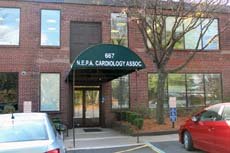 On this day, Kitch and I made our way to N.E.P.A. Cardiology Associates for a nuclear stress test with exercise. The test measures how well the heart is pumping blood. It can detect muscle damage and the existence of narrow or blocked arteries.
On this day, Kitch and I made our way to N.E.P.A. Cardiology Associates for a nuclear stress test with exercise. The test measures how well the heart is pumping blood. It can detect muscle damage and the existence of narrow or blocked arteries.
An appointment to have a stress test is something few people look forward to. The people we met at NEPA Cardiology Associates did a number of things to reduce the apprehension and anxiety that comes with this experience. The technicians and nurses were competent and understanding.
In the waiting, room we met people who were welcoming and kind. There were five of us, and all of us were a little bit on edge, because we were facing the unknown. We formed a community. We shared our stories, experiences and information. We were strangers, but each of us knew something about defeat, loss, suffering and pain. We were connected by the power of compassion, and that made all the difference.
After a very competent technician inserted an intravenous line in a vein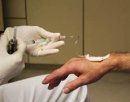 in my right hand, she took me to a room where a gamma camera recorded pictures for about nine minutes in what is known as a “rest scan.”
in my right hand, she took me to a room where a gamma camera recorded pictures for about nine minutes in what is known as a “rest scan.”
About 30 minutes later, two nurses took me to another room where sticky patches, were placed on my chest. These patches are essential for the electrocardiogram and the heart monitor.
Then I was taken to the treadmill for the actual test. Before the test ended, a radioactive dye was injected into an intravenous line. This substance travels to the heart. A special scanner similar to an X-ray machine detects the radioactive material in your heart. It creates images of the heart muscle. Inadequate blood flow to any part of the heart will show up as a light spot on the images because not as much of the radioactive dye is getting there.
test ended, a radioactive dye was injected into an intravenous line. This substance travels to the heart. A special scanner similar to an X-ray machine detects the radioactive material in your heart. It creates images of the heart muscle. Inadequate blood flow to any part of the heart will show up as a light spot on the images because not as much of the radioactive dye is getting there.
The final part of the test involves another session with the gamma camera.
For seven minutes the camera records images of the heart after the stress test. During this procedure any motion on the part of the patient will distort the image. It is a very quiet time of thought and reflection.
The Power of Kindness
Our three hour visit to NEPA Cardiology Associates was pleasant and productive. The atmosphere was welcoming and the personnel were helpful.
The nurses and the cardiologist who worked with us were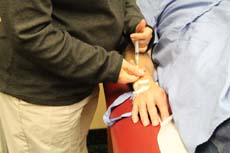 wonderful. They treated both Kitch and me like members of their family. They were sensitive to our fears. They were not rushed or patronizing. They made us feel secure. They explained every step in the procedure. There were no unpleasant surprises. They were cooperative and helpful enabling Kitch to record this episode in our heart scene journey.
wonderful. They treated both Kitch and me like members of their family. They were sensitive to our fears. They were not rushed or patronizing. They made us feel secure. They explained every step in the procedure. There were no unpleasant surprises. They were cooperative and helpful enabling Kitch to record this episode in our heart scene journey.
As we left the building I had a conflicting sense of gratitude and sadness. I was thankful for the positive experience, but saddened that I would probably never see my waiting room friends again.
Recalling the 37 magical words of Leo Buscaglia put everything in perspective,
“Too often we underestimate the power of a touch, a smile, a kind word, a listening ear, an honest compliment, or the smallest act of caring, all of which have the potential to turn a life around.”
Thank you, Kaylin.
Thank you, Dr. Das and the professionals at N.E.P.A. Cardiology.
Thank you, Arlene, Florence, Lee, Leslie, and George.
You are examples of America at its best.
Please provide feedback to:
